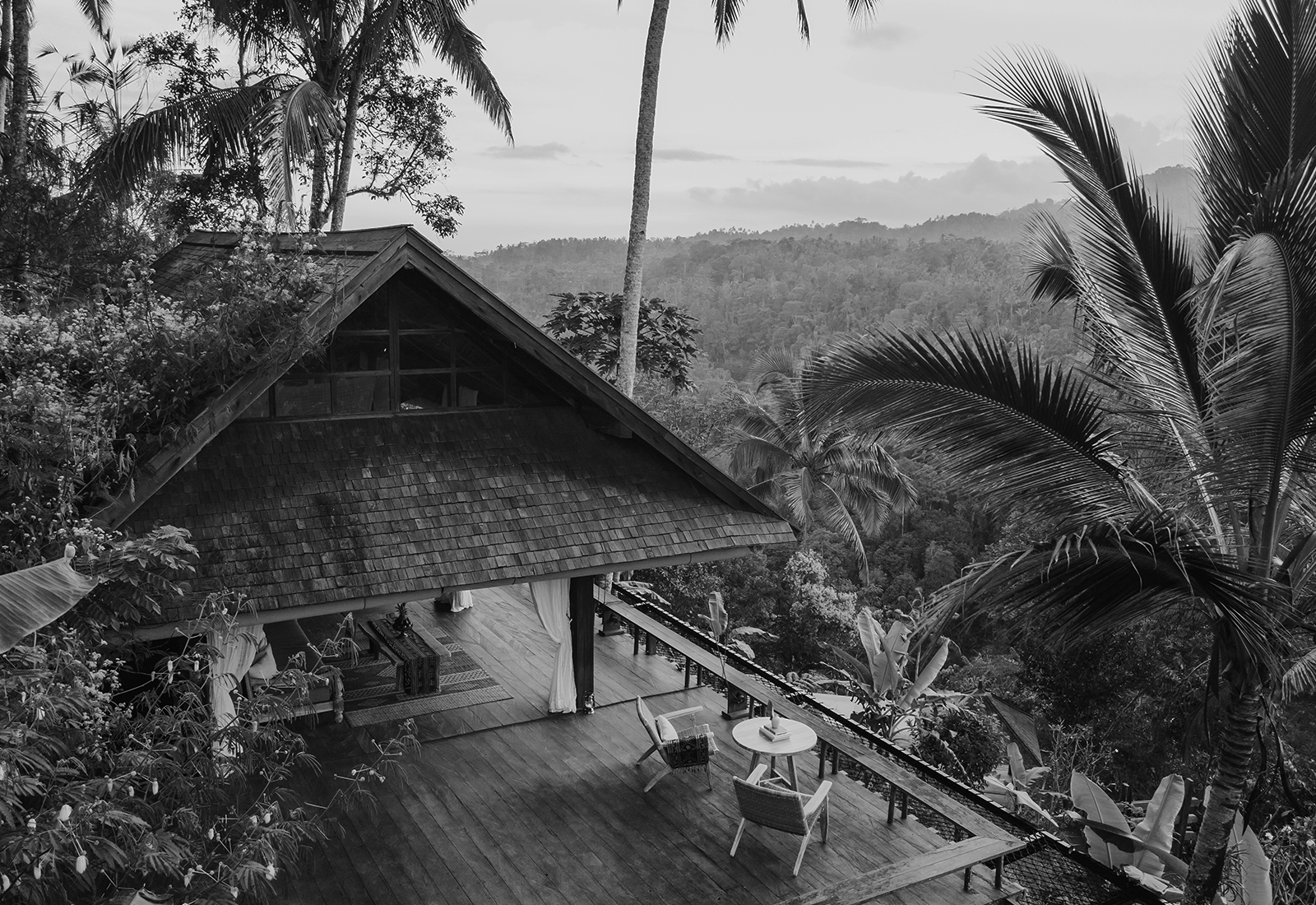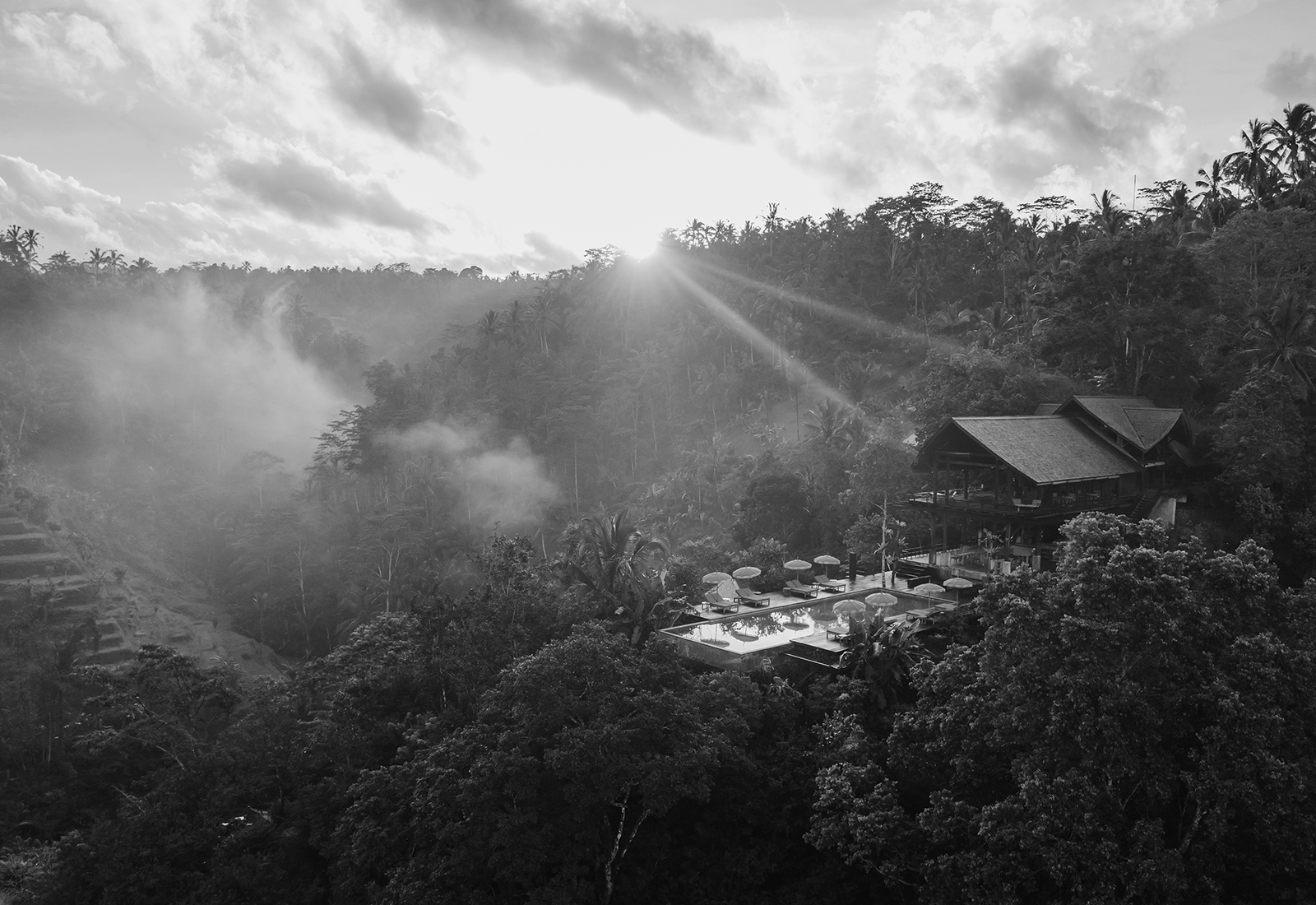WEBSITE PREVIEW – LAUNCHING AUGUST 2021

Developed thoughtfully over decades and through the pandemic, this brand extension symbolizes Banyan Tree brand's vision to creating immersive experiences combining deep nature and sustainable design. Pioneering a "no walls, no doors" concept throughout the property and in each of its 16 balés (villas), the experience concept is an invitation into a different way of being, aligned to the natural rhythms of the living world.
A Jl. Banjar Selat, Buahan Kaja | IG @banyantree.escape


"Our overall approach was to honor the beautiful site, and surface the great beauty already there to human awareness. A site survey of endemic flora and fauna was conducted, along with extensive field research on the sociological, architectural and cultural aspects within 1-hour radius of the property. This research informed both the operational and design aspects of the property, with a vision that it would authentically reflect the agricultural, religious, cultural and artisanal craft of its locale. Experiences were lovingly created using this research into a Discovery Calendar that celebrates on-site excursions as well as surrounding treks. Experience collaborations with local healers, farmer and craftspeople are at the heart of the property.
Buahan follows the standards set out by the Global Sustainable Tourism Council (GSTC) to preserve local heritage, local culture, environmental protection and social responsibility through its brand pillars of being connected to nature, providing a discovery experience, and being embedded in the community.
Avoiding large a large footprint, the resort is broken into many smaller structures, exemplified by Toja Spa having 4 smaller treatment suites as opposed to one big structure. Other facilities have also been centralized to also reduce the footprint exemplified by The Open Kitchen, Botanist Bar, and the main pool all centralized into one structure."
"As the resort offers 16 private pool villas, each villa has become a sanctuary within a sanctuary, spread out across the vast enclave that makes up the site with the new normal a focus with respect to a safe, healthy and sustainable environment at all times. With so few rooms, the small footprint of the resort allows guests to lower their carbon footprint through the use of recycled materials, alternate forms of energy, and overall lower power usage as guests enjoy nature’s symphony.
Vernacular open design concept through local collaboration with Banyan Tree's Head of Architecture, Dharmali Kusumadi, who designed the balés (villas) and other resort facilities and Gede Kresna, a recognized sustainable local architect who focuses on Balinese design and environmentally friendly architecture.
Dwelling space designed to resemble traditional Balinese housing with all individual spaces for living, sleeping, and bathing had to be incorporated within a courtyard, compound, or single roofed open deck, the latter being the concept used for Buahan, a Banyan Tree Escape. Each bale is uniquely located to maximize the connection with nature, while reducing the footprint, and impact on the surrounding environment on the resort’s unique topographical canvas.
Sustainably construction methods were used to reduce the impact on the surrounding environment through forgoing the use of heavy machinery in the construction phase, negating the need to clear large areas of the dense jungle for such machines to operate. Traditional techniques to fasten materials together we also used to avoid use of non-recyclable materials such as nails.
Rich in artisan tapestry, the balés have various art and design elements driving the sense of place. Craftsmen from central Java hand-crafted the copper bathtubs in every balé, each as unique as a human fingerprint. Further endearing our rooms, each headboard and the borders of the vanity mirrors were exquisitely carved by a local Balinese carpenter from the island, with non-repeating patterns across all 16 private pool balés."
"The resort is constructed from sustainable material like Ulin wood, aka ironwood which hails from the Kalimantan region and was previously used in boat piers and fishing boat decks. The hardwood's innate resistance to insects and wood borers made it a choice material for bridges, piling, docks, sluices, and other maritime structures, therefore a perfect natural element for the resort.
The resort is also constructed from natural fast-growing bamboo, used in smaller structures due to is flexibility, strength, and ability to create organic shapes reflecting forms found in nature."
"Striving to make as little impact as possible on the surrounding community as the resort was accepted as a member of Buahan's Subak community, a UNESCO recognized initiative that seeks to protect the cultural landscape of Bali through water management practices like the Subak System. To do this the resort has kept and improved two traditional irrigation 'Subak' drains that run through the site, showing respect for the area's original inhabitants, and positively impacting their lives."
"The villas were individually placed on the enclave, having a small footprint, and ensuring that construction was completed without vastly altering nature. All resort features are lightly built onto the land meaning no large machinery was used, and the land never had to be cleared, emphasizing the importance of maintaining the environment."